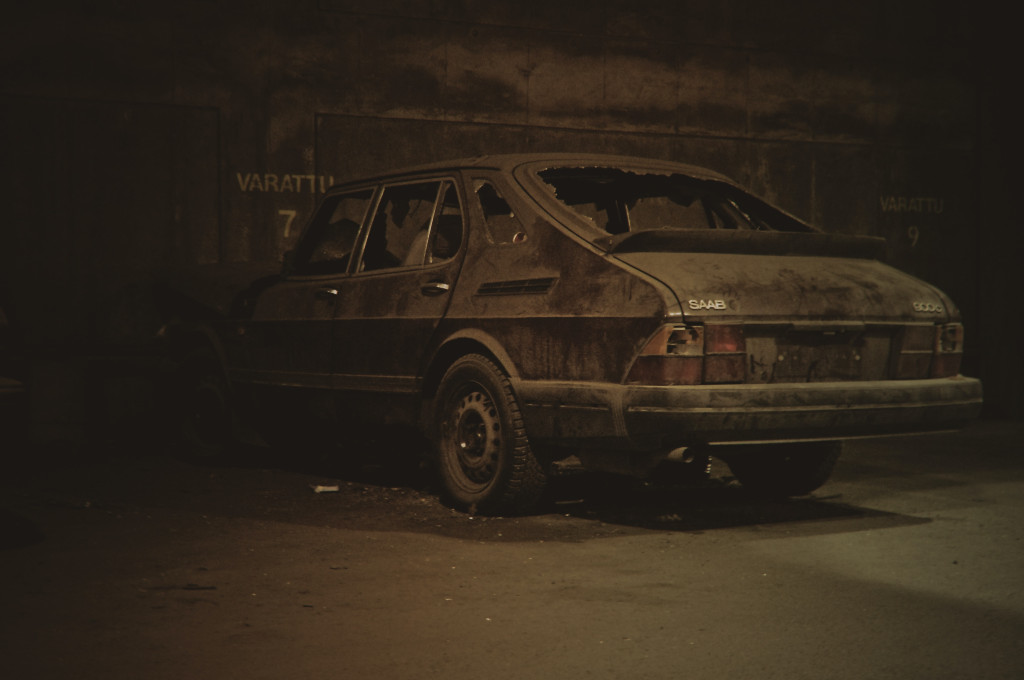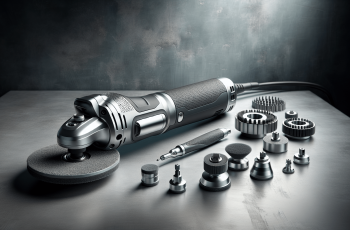In this article, we will explore the world of dust extraction solutions for die grinders. Whether you’re a DIY enthusiast or a professional, the issue of dust can be a real problem when using die grinders. But fear not, because we have some fantastic solutions that will not only help keep your workspace clean but also ensure your health and safety. From portable dust extractors to specialized attachments, we have you covered. So, let’s discover how you can make your die grinding experience cleaner and more enjoyable!
Why Dust Extraction is Important for Die Grinders
Die grinders are powerful tools that are commonly used in various industries, including metalworking and woodworking. These tools produce a significant amount of dust and debris during operation, which can be detrimental to both the user’s health and the surrounding environment. This is where dust extraction systems come into play. By effectively removing and capturing the dust particles generated by die grinders, these systems provide numerous benefits in terms of air quality, safety, and overall performance. In this article, we will explore the different types of dust extraction systems, key features to consider, how to choose the right system for die grinders, installation and setup, maintenance and cleaning, common challenges and troubleshooting, safety considerations, and the undeniable benefits of using dust extraction systems for die grinders.
Types of Dust Extraction Systems
Centralized Dust Extraction Systems
Centralized dust extraction systems are often used in larger industrial settings where multiple die grinders are operated simultaneously. These systems consist of a central dust collector unit that is connected to various workstations through a network of ducts and hoses. The dust and debris produced by the die grinders are then sucked into the central unit, where they are filtered and collected. Centralized systems are highly efficient as they can handle large volumes of dust and are capable of capturing even the finest particles.
Portable Dust Extraction Systems
On the other hand, portable dust extraction systems are suitable for smaller-scale operations or situations where the die grinders need to be used in different locations. These systems are typically equipped with a compact dust collector and a flexible hose that can be connected directly to the die grinder. Portable systems are convenient, versatile, and easy to maneuver, making them an excellent choice for workshops with limited space or frequent tool relocation.

Key Features to Consider
When selecting a dust extraction system for die grinders, there are several key features that you should consider to ensure optimal performance and compatibility with your specific needs. These features include:
Suction Power
The suction power of the dust extraction system determines its ability to effectively capture dust particles. A higher suction power is generally preferable, as it ensures that even the smallest and most stubborn dust particles are efficiently sucked into the system. However, it is important to strike a balance between suction power and the die grinder’s capacity to ensure smooth operation.
Filtration System
The filtration system plays a vital role in determining the quality of air that is released back into the workplace. Look for a dust extraction system with high-quality filters that are capable of trapping both coarse and fine dust particles effectively. Some systems may also offer additional filtration technologies, such as HEPA filters, which further enhance the air quality by capturing microscopic particles.
Dust Collection Capacity
The dust collection capacity refers to the amount of dust and debris that the system can hold before requiring emptying. It is essential to choose a system with a sufficient collection capacity to avoid frequent interruptions for emptying. Consider the volume of work you anticipate and choose a system that can handle your expected workload without frequent downtime.
Choosing the Right Dust Extraction System for Die Grinders
Selecting the right dust extraction system for your die grinders requires careful consideration of various factors. Here are some key aspects to keep in mind:
Assessing the Grinding Environment
Before choosing a dust extraction system, it is crucial to assess the grinding environment in terms of space, layout, and ventilation. Consider whether you require a centralized or portable system based on the size of your workspace and the mobility requirements of your die grinders. Additionally, evaluate the overall air circulation and make any necessary adjustments to maximize the efficiency of the dust extraction system.
Considering the Size and Power of Die Grinders
Die grinders come in various sizes and power capacities, and it is essential to ensure that the chosen dust extraction system can match the requirements of your specific die grinders. Check the compatibility of the system with different die grinder models and verify whether it provides sufficient suction power to handle the particular tool’s dust production.
Budgetary Constraints
While investing in a high-quality dust extraction system is essential, it is also important to consider your budgetary constraints. Determine your budget range and explore options that offer the best value for your money without compromising on key features and performance. Remember that a well-designed and reliable dust extraction system is a long-term investment that will provide significant benefits in terms of health, safety, and productivity.

Installation and Setup
Once you have chosen the appropriate dust extraction system for your die grinders, proper installation and setup are crucial to ensure optimal performance. Consider the following steps:
Locating the Dust Extraction System
Place the dust extraction system in a suitable location that allows for efficient air circulation and easy access for maintenance and cleaning. Centralized systems should be positioned strategically to minimize duct lengths and maximize suction power, while portable systems can be placed in close proximity to the die grinders for convenient operation.
Connecting the Die Grinder to the Dust Extractor
Ensure that the die grinder is correctly connected to the dust extractor using a suitable hose or attachment. Verify the compatibility of the hose size with both the die grinder and the dust extraction system to ensure a secure and efficient connection. It is also essential to check for any air leaks or loose connections that may compromise the effectiveness of the extraction system.
Proper Ventilation and Ducting
Proper ventilation and ducting play a vital role in maximizing the efficiency of the dust extraction system. Ensure that the ducts are properly routed and connected, avoiding sharp bends or restrictions that may hinder the airflow. Consider consulting with a professional or following manufacturer guidelines for the best configuration and layout of the ventilation system.
Maintenance and Cleaning
Regular maintenance and cleaning are crucial to keep your dust extraction system in optimal condition and ensure its longevity. Here are some essential tasks to perform:
Regular Filter Cleaning
Regularly clean the filters of your dust extraction system to prevent dust buildup and maintain airflow. Follow the manufacturer’s instructions for proper cleaning techniques and schedules. Depending on the system, this may involve brushing or blowing off accumulated dust or rinsing the filters. It is important to allow the filters to dry completely before reinstallation.
Emptying the Dust Collection Bag/Tank
Regularly empty the dust collection bag or tank to prevent overflow and maintain the system’s dust collection capacity. This should be done before it reaches its maximum capacity to avoid any interruptions during operation. Dispose of the collected dust and debris properly according to local regulations.
Inspecting and Replacing Worn Parts
Inspect the system regularly for any signs of wear, damage, or blockage. Pay close attention to hoses, fittings, and seals, as any leaks or poor sealing can compromise the system’s effectiveness. Replace any worn or damaged parts promptly to prevent further issues and maintain optimal performance.

Common Challenges and Troubleshooting
While dust extraction systems offer numerous benefits, some common challenges may arise. Here are a few troubleshooting tips for addressing these challenges:
Insufficient Suction Power
If your dust extraction system is not providing adequate suction power, check for any clogs or blockages in the hoses, filters, or ducting. Clean or replace the filters if necessary and ensure that all connections are secure and airtight.
Clogging of Filters
If your filters are becoming clogged too quickly, consider upgrading to filters with a higher dust-holding capacity or additional filtration technologies. Regularly clean and maintain the filters to prevent excessive dust buildup.
Leakage or Poor Sealing
If you notice any air leaks or poor sealing in your dust extraction system, inspect the hoses, fittings, and seals for any damage or wear. Replace any damaged components and ensure all connections are tightly secured to maintain efficient extraction.
Safety Considerations
When using dust extraction systems with die grinders, it is important to prioritize safety. Here are some key safety considerations:
Wearing Personal Protective Equipment
Always wear personal protective equipment (PPE) when operating die grinders, including safety glasses or goggles, a dust mask or respirator, and hearing protection. PPE helps protect against dust particles, debris, and noise to ensure a safe working environment.
Using Dust Extraction Systems in Confined Spaces
If using die grinders in confined spaces, pay close attention to proper ventilation and air circulation. Ensure that the dust extraction system is capable of effectively capturing and removing dust particles in the limited space to prevent the buildup of airborne contaminants.
Ensuring Proper Grounding
Die grinders generate static electricity during operation, which can be a safety hazard. Ensure that both the die grinder and the dust extraction system are properly grounded to prevent any potential electric shocks or sparks.
Benefits of Dust Extraction Systems for Die Grinders
Using a dust extraction system with die grinders offers numerous benefits, such as:
Improved Air Quality
Effective dust extraction systems significantly reduce airborne dust particles, improving the overall air quality in the workspace. This not only provides a healthier environment for the operators but also prevents dust from settling on surfaces and machinery, reducing the risk of equipment malfunctions and maintenance requirements.
Enhanced Visibility and Precision
By removing dust and debris as they are generated, dust extraction systems provide improved visibility of the workspace. This allows operators to maintain clear lines of sight and achieve higher levels of precision in their work, resulting in better-quality finished products.
Reduced Risk of Health Issues
Inhalation of dust particles generated by die grinders can lead to serious respiratory problems, such as lung diseases and irritation of the airways. By effectively capturing and removing dust particles, dust extraction systems significantly reduce the risk of health issues for operators, improving their overall well-being and productivity.
Conclusion
Investing in a high-quality dust extraction system is a must-have for anyone using die grinders. These systems effectively capture and remove dust particles, providing numerous benefits in terms of air quality, safety, and performance. When choosing a dust extraction system, consider factors such as suction power, filtration system, and dust collection capacity, and make sure to assess the grinding environment and budgetary constraints. Proper installation, regular maintenance, and safety considerations are essential for optimal performance and longevity. By using a dust extraction system with die grinders, you can enjoy improved air quality, enhanced visibility and precision, and reduced health risks, ultimately leading to a more efficient and productive work environment.



